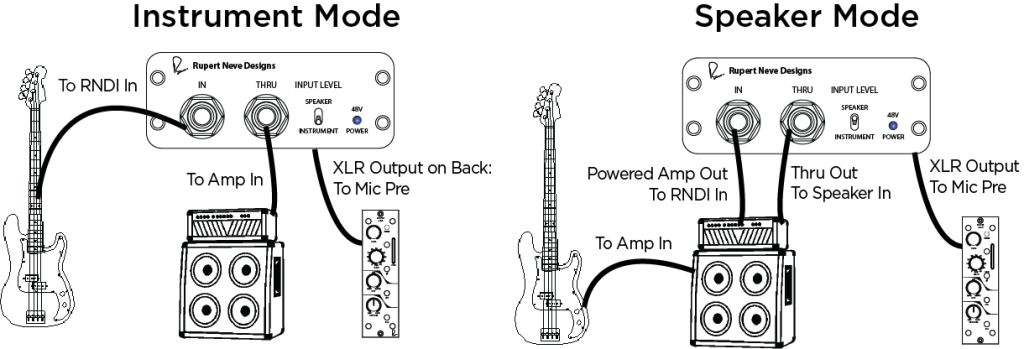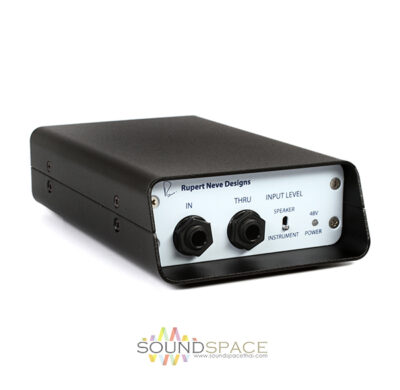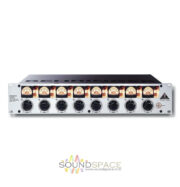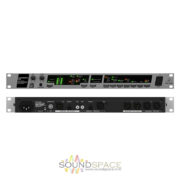Product Categories
- มิกเซอร์ (Mixer)
- ลำโพง (Speaker)
- เพาเวอร์แอมป์ (Power AMP)
- ไมโครโฟน (Microphone)
- ปรับแต่งเสียง (Signal Processor)
- บันทึกเสียง (Studio & Recording)
- • เครื่องบันทึกเสียงดิจิตอล (Digital Recorder)
- • โปรแกรมบันทึกเสียง (Software,Plug-in)
- • การ์ด คอนเวอร์เตอร์ (Card, Converter)
- • ออดิโออินเตอร์เฟส (Audio Interface)
- • ไมโครโฟน (Studio Microphone)
- • ไมค์ปรีแอมป์ (Microphone Preamp)
- • ลำโพงห้องบันทึกเสียง (Studio Monitor)
- • อุปกรณ์ปรับแต่งเสียง (Signal Processor)
- • หูฟัง (Headphone)
- • แอมป์ขยายหูฟัง (Headphone Amp)
- • อุปกรณ์เสริม (Recording Accessories)
- เครื่องเสียงพกพา (Portable)
- อุปกรณ์ ดีเจ (DJ Equipment)
Rupert Neve Designs RNDI Active Di
ไดเร็กบ็อกซ์ Di อินเตอร์เฟส RNDI Active Transformer Direct Interface raises the bar for DIs, Class-A Biased Discrete FET Amplifiers, Instrument and Speaker Modes
ราคาไม่รวมภาษีมูลค่าเพิ่ม
฿16,000.00 ฿12,000.00
Description
Rupert Neve Designs RNDI Active Transformer Direct Interface
ไดเร็กบ็อกซ์ Di อินเตอร์เฟส RNDI Active Transformer Direct Interface raises the bar for DIs. The product of experimentation with new transformer designs, the interface uses class-A biased discrete FET amplifiers with low-impedance, transformer-balanced outputs to deliver consistent performance over cable stretches as far as 100′ with minimal loss of high-frequency information.

Features:
- Class-A Biased Discrete FET Amplifiers
- Low-Impedance, Transformer-Balanced Out
- “Re-Amping” of Pro Line-Level Sources
- Instrument and Speaker Modes
- Powered by +48V Phantom Power
- Rugged Powder-Coated Steel Chassis
- Minimal Loss of HF Over Long Distances
- Adds 2nd and 3rd Order Harmonics
- +21.5 dBU of Headroom
- Handles 1000W Power Amplifier Output
The unit is powered by industry-standard 48V phantom power on an XLR connection and creates a very high-impedance input of 2 MOhms to ensure consistent performance for a wide variety of instruments. The class-A design ensures that there is no crossover distortion added to the signal, which would otherwise add upper order odd harmonics which are musically dissonant. Instead the unit provides 2nd order (octave) and some 3rd order (fifth above octave) harmonics to enliven the sound. The discrete design of the system means there are no integrated circuits or digital components that can detrimentally effect the sound signature.
In instrument mode, the DI offers the user +21.5 dBU of gain, which is also capable of working with professional line-level sources like interfaces, CD players, and drum machines without a pad. This allows the unit to act as a “Re-Preamp” so you can change the tonality of a previously recorded piece of music. To do this, simply connect a channel output of the audio interface to the input of the DI and engage 48V power. By “Re-Preamping”, you can apply the tone of another preamp to the source and more accurately automate or control the drive level on the preamp.
When placed in speaker mode, the unit can handle the output of a 1000W power amplifier (92 Vrms or 266 Vp-p) to capture the full tone of the instrument, preamp, EQ, inserts, and the amplifier’s output stages before hitting the speakers. This allows the engineer to avoid any bleed in a live environment and any unwanted tone added by the speaker cabinet or microphone. When used with modern speaker emulation plug-ins, this allows the engineer to take advantage of the flexibility of digital modeling and the non-linear response of an actual analog amplifier.
See the diagrams below for standard connection examples.

Specifications
Noise:
Measured Output, un-weighted, 22Hz-22kHz, source impedance 150 Ohms to 10K Ohms
Better than -110dBV
Input Impedance
Instrument Setting: 2.2 Meg Ohm
Speaker Setting: 200k Ohm
Output Impedance
Less than 40 Ohms
Frequency Response
+/- 0.25dB from 25Hz – 44kHz
+/- 1dB from 12.5Hz – 63kHz
-3dBu @ 92kHz
Maximum Input Level
Instrument = +21dBu Typical Speaker = +41.5dBu, 92 Vrms (266Vp-p)
Maximum Output Level
+11.5dBu output at maximum input level
Total Harmonic Distortion plus Noise
@ 1kHz, +20dBu input level:
0.25% Typical (2nd and 3rd harmonic)
@ 1kHz, -20dBu input level :
0.015% Typical (2nd and 3rd harmonic)
@ 20Hz, -20dBu input level :
0.75% Typical (2nd and 3rd harmonic)
Power Requirements
Phantom power, 4.5mA @ +48VDC
Weight
1.5lbs
Dimensions
6.25” long x 4”wide x 1.5” high
















